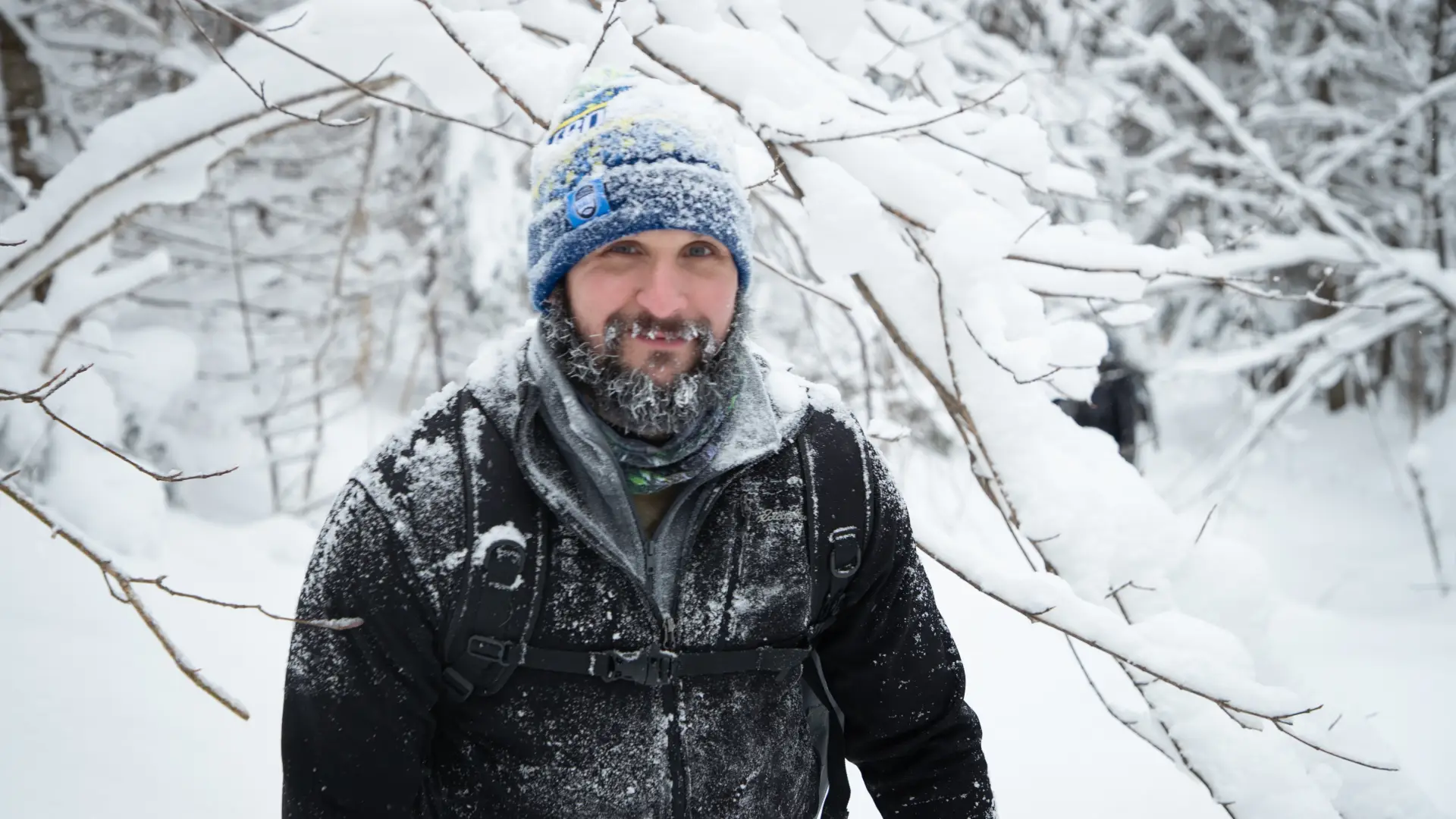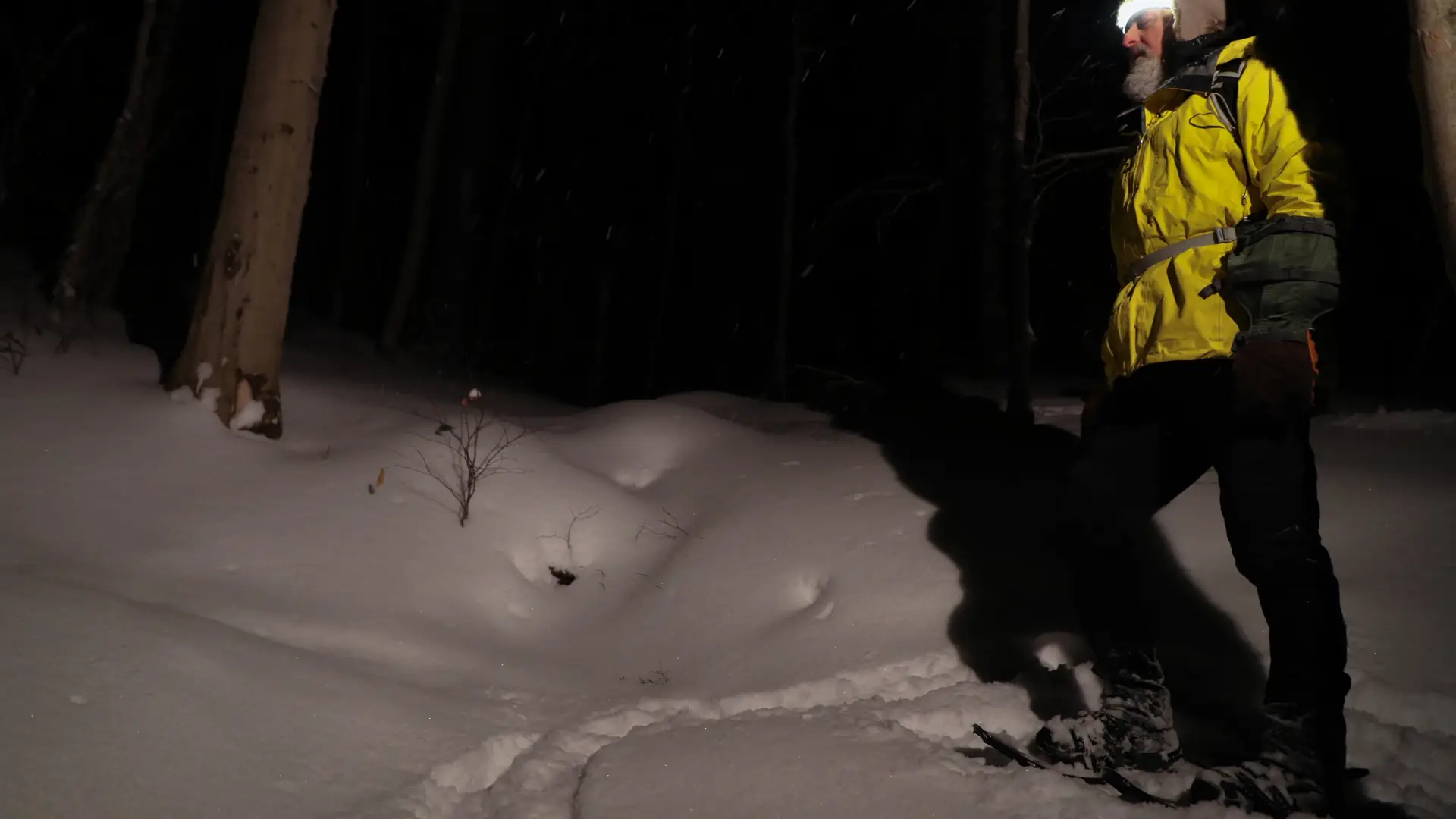
Written by the NYS Department of Environmental Conservation
----
Hiking in the winter can be fun and rewarding. Snow, ice, and cold temperatures can also make it more challenging. To ensure a safe and enjoyable hike, be prepared both for the conditions and the hike itself. Before you head to the trailhead, do your research and pack the proper gear.

Do Your Research
Planning your trip requires more than choosing a hike. Plan in detail by doing research on the route, trail conditions, weather forecasts, parking availability, and more. Don’t rely on user-generated hiking applications for all your information. These services can be helpful for discovering new hikes but cross-reference the information they provide with trusted sources and paper maps.
Start by choosing a hike that is suitable for the experience and physical ability of every person in your group. Winter hiking is very different from warm-weather hiking. An experienced summer hiker should still start small when it comes to winter hikes and work their way up to larger, more technical mountains.
Once you have selected a hike, research the route. Some mountains have multiple trails – familiarize yourself with which one you will be taking, other trails that intersect with yours, and major landmarks along the way. Check DEC’s Adirondack Backcountry Information pages for special notices and trail updates. Plan where you will park as well. Parking is limited at most trailheads. Have several backup hikes planned in case the parking lot at your preferred destination is full.

Weather conditions can heavily impact the outcome of your hike. Temperatures and conditions can change dramatically between the trailhead and the summit. Check the forecast for both the base elevation and the summit, if available. As you hike into higher elevations you will likely encounter colder temperatures, stronger winds, and more snow and ice. Check the weather for the day before your hike to get an idea of what conditions you will encounter and for the night of your hike in case your trip runs long.
Research sunrise and sunset times as well, and plan to make the most of your daylight hours. Once you have made your plan, share your itinerary, route, and any other important information about your trip with a trusted friend or relative who can alert DEC Forest Rangers if you do not return on time.
Pack the Right Gear
Having the right gear for your hike, the weather, and the trail conditions can make the difference between a successful hike and requiring rescue. Start by reviewing the 10 essential items listed on DEC’s Hike Smart NY webpage. These items – a map and compass or GPS system, insulation and rain gear, a headlamp or flashlight, first aid supplies, an emergency kit, a fire starting kit, food, water, sun protection, and emergency shelter – should be with you on every hike.

There is seasonally specific gear you will need to bring as well. Traction devices such as microspikes or crampons are necessary for safely walking on ice. Snowshoes or skis are needed once snow reaches depths of eight inches. Be strategic about your clothing. Dress in layers, starting with non-cotton, moisture-wicking base layers, and bring extra. Add and remove layers as necessary to keep yourself warm without sweating. As sweat dries it cools, creating ideal conditions for hypothermia. Bring extra socks as well as waterproof and windproof layers. Wear warm, waterproof boots.
Prevent your water from freezing on cold days by insulating water bottles and hydration packs. Break food up into bite size pieces before you pack it so that even if your food freezes you will still be able to eat it. Bringing a small backpacking stove and a metal container will allow you to melt and purify more water if yours does freeze.
Some hikers make the mistake of relying on their phone for light and navigation. Phones can die quickly in the backcountry, especially when cold temperatures drain the battery. Having a map and compass is vital in the winter when trails can be hard to make out in the snow. Having a headlamp or flashlight ensures you can see in the dark if you start your hike early or end it late. Don't forget extra batteries. Having enough light to safely hike by will decrease your chances of getting lost or injuring yourself.

In addition to doing your research, making a plan, and bringing the proper gear, make sure you are physically prepared for your hike. Winter conditions can be physically and mentally tiring. Walking through snow and over ice exerts extra energy. Get a good night’s rest before your hike, hydrate, and eat a good breakfast. Keep yourself hydrated and nourished throughout your hike – your body requires more water and calories in the winter. Pay attention to your body. If you become too cold or tired, turn back. You can always complete your hike another day.
Get out there
Winter hiking is a wonderful way to experience the outdoors. Snow-covered forests, icy waterways, and frosted summit views are all beautiful but they can be dangerous, too. By planning ahead and preparing you minimize your risk and increase your chances of a successful experience.